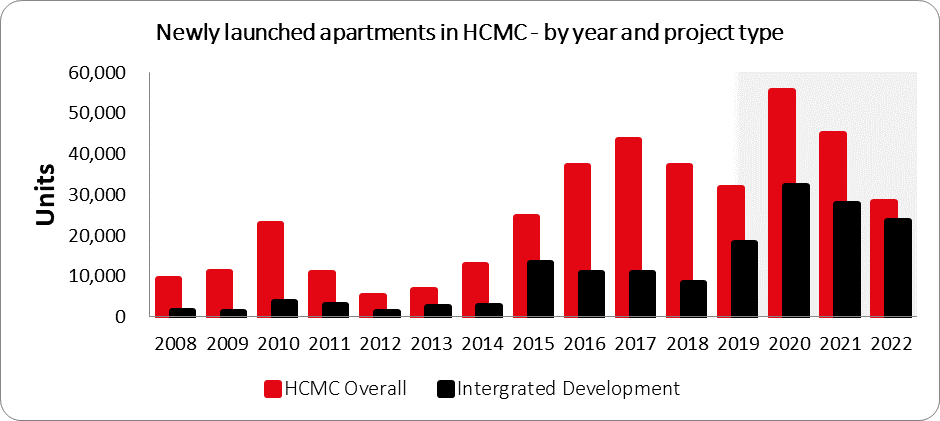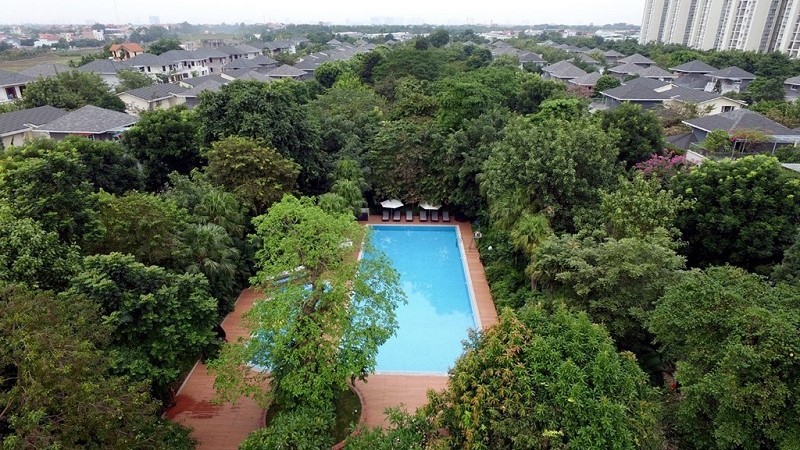
Looking at recent projects launched in Vietnam, we observe that integrated large-scale projects continue to dominate the residential markets of Hanoi, HCMC and satellite provinces. This trend has become more obvious as numerous new residential developments carry the word “city” in their names, including Swan City, Empire City, Celadon City, Aqua City, and so on.

JLL identified the “city within the city” residential concept, commonly referred to as large-scale integrated developments, as an upcoming trend two years ago. This urban form has grown in popularity as developers seek to attract buyers with holistic, well-planned communities within a city for those who wish to avoid the chaos created by rapid urbanization and lagging infrastructure in shared facilities.
Nowadays developers taking part in city planning have to carefully understand the fundamentals of city planning in order to create sustainable value for their large-scale projects.
Developer considerations for sustainable integrated development
JLL reveals some factors that developers should take into consideration for their sustainable integrated developments.
1. Planning traffic and transport infrastructure
Due consideration of planning traffic infrastructure is crucial for large-scale developments. With growing car ownership in Vietnam, congested roads and lack of parking space will spur the demand for functioning traffic solutions. Sufficient parking, integrated access to surrounding roads and public transport will become key selling points that will enhance the development’s value.
2. Phasing out development
As the size of developments grows, sensible space planning for various functions and building scales has become a challenge for developers. To achieve convenient, functional and diverse quality public spaces, careful consideration of city planning aspects is mandatory.
Lively street frontage, plazas, sidewalks, and a scaled building arrangement will lead to sustainable and sought-after neighbourhoods, thus ensuring sustained value. Careful phasing should be considered to ensure the sense of completion of each component of each neighbourhood. A good example of this was seen in the Phu My Hung NUA project, where “green” walls were used to separate completed buildings from those under construction.
3. Creating and maintaining public facilities
One key attraction for large-scale projects is the public facilities within the development. Facilities such as public parks and sports stadiums help attract buyers but can be costly to maintain down the road.
Therefore, developers should raise awareness among buyers regarding potential maintenance costs and how it would be in their interest to fund these costs to safeguard the value of their properties.
4. Teaming neighborhoods to shared facilities
For projects that benefit from existing public facilities, it is critical for developers to differentiate their developments’ internal facilities and create a sense of identity for their projects. A key method would be to harmonize the ratio between the number of users and shared facilities including pools, gyms, and children’s playgrounds to ensure the long-term value of the development.

5. A diverse and inclusive living environment
The beauty of any large-scale development is the ability to offer a diverse range of housing types to various groups of potential buyers. While each building should be custom-designed for a specific group, the overall living environment should still be in harmony.
For example, in Phu My Hung NUA, developers planned for smaller apartments targeted towards single expats and young tenants, to be situated in the urban heart of the development. Meanwhile, family-oriented buyers who purchased larger units were allotted buildings in the quieter area of the development.

















